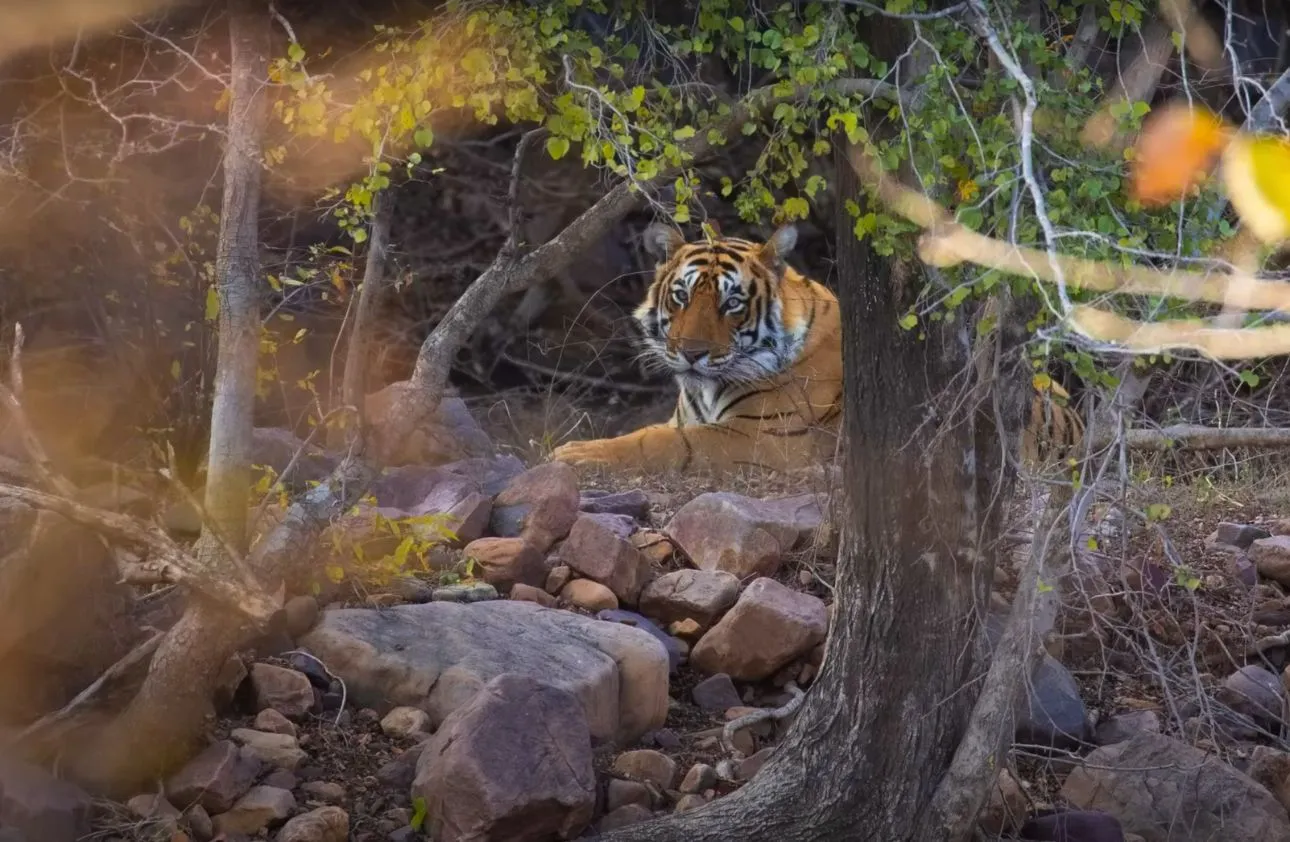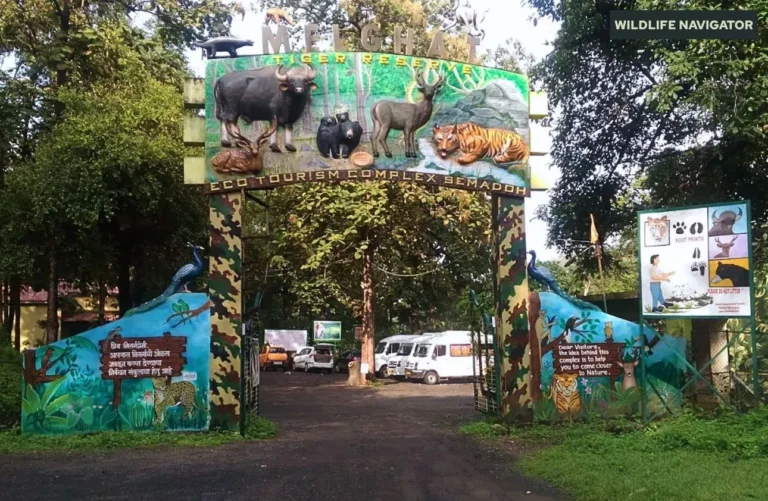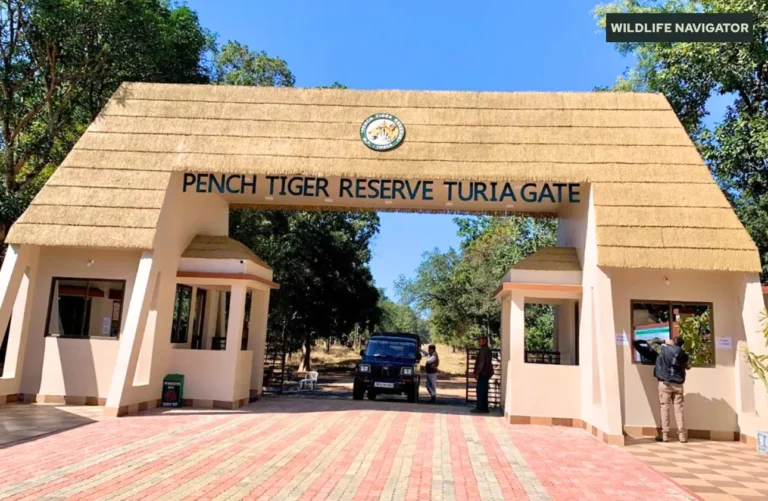Project Tiger – India’s Iconic Wildlife Conservation Program

The Royal Bengal Tiger is more than just India’s national animal—it is a living symbol of power, courage, and wilderness. For centuries, this majestic predator has roamed the forests of the subcontinent, inspiring folklore, art, and mythology. But by the mid-20th century, the tiger was facing an alarming decline. Uncontrolled hunting, poaching for skins and body parts, and the rapid destruction of forests brought this apex predator to the brink of extinction.
In the early 1970s, India’s tiger population had fallen to a shocking low of just around 1,800 individuals. This decline was not only a wake-up call for conservationists but also a threat to India’s ecological balance. Tigers are keystone species, meaning their presence maintains the health of entire ecosystems. Without them, prey species would multiply unchecked, forests would degrade, and biodiversity would collapse.
Recognising this urgent crisis, the Government of India launched a pioneering initiative on April 1, 1973, called Project Tiger. Spearheaded by then Prime Minister Indira Gandhi, the program aimed to protect tigers by creating safe habitats, controlling poaching, and ensuring sustainable coexistence between humans and wildlife.
What began as a bold step with just nine tiger reserves has today grown into one of the world’s most successful wildlife conservation models, with more than 50 tiger reserves across India.
Project Tiger is not just about saving a single species—it is about protecting India’s forests, rivers, and biodiversity for future generations. Over the decades, it has evolved into a global benchmark, showing how dedicated conservation efforts can revive a species once on the verge of vanishing.
1. History & Background of Project Tiger
The story of Project Tiger begins in the late 1960s and early 1970s, when India’s tiger population faced a severe crisis. Once abundant across the forests of Asia, the Bengal Tiger (Panthera tigris tigris) was rapidly disappearing from its natural habitat.
Several factors were responsible for this decline:
- Hunting and Trophy Killings: During colonial times and even after independence, tiger hunting was considered a mark of prestige. Royal families and British officers often conducted hunting expeditions, leading to the mass slaughter of tigers. Skins and mounted tiger heads became prized possessions.
- Poaching for Illegal Trade: Tiger skins and bones were in high demand in international markets, especially for traditional medicines and luxury goods. This illegal trade pushed tigers to the edge.
- Habitat Loss: As human populations grew, forests were cleared for agriculture, settlements, and industries. With shrinking forests, tigers lost not only their homes but also their prey base.
- Human–Wildlife Conflict: As habitats are fragmented, encounters between tigers and humans have increased, often resulting in retaliatory killings.
By 1972, a nationwide census revealed a shocking reality—only around 1,800 tigers were left in the wild. This alarming figure created a sense of urgency and highlighted the need for immediate conservation action.
1.1 Formation of the Tiger Task Force
To address this crisis, the Government of India, under the leadership of Prime Minister Indira Gandhi, established a Tiger Task Force in 1972. This task force studied the condition of tigers, identified the reasons for their decline, and recommended strategies to ensure their survival.
1.2 Launch of Project Tiger (1973)
Based on the task force’s recommendations, Project Tiger was officially launched on April 1, 1973. It became one of the world’s largest and most ambitious species conservation initiatives. The primary idea was to create tiger reserves where tigers could thrive without human interference.
Initially, the project started with nine reserves, covering an area of about 14,000 sq. km. These reserves included famous names like Jim Corbett National Park (Uttarakhand), Kanha National Park (Madhya Pradesh), and Manas National Park (Assam). Each reserve was carefully selected for its tiger population and ecological importance.
1.3 Growth Over the Years
From its humble beginnings in the 1970s, Project Tiger has grown into a vast network of 54+ reserves across 18 states, protecting over 75,000 sq. km of forest habitat. It has also inspired global conservation programs and positioned India as a leader in tiger conservation.
This historic initiative laid the foundation for modern wildlife protection in India and continues to serve as a reminder of how decisive action can save a species from extinction.
2. Objectives of Project Tiger
Project Tiger was not just about saving tigers—it was about protecting India’s rich biodiversity and ensuring the balance of its ecosystems. The project set clear, focused objectives to guide conservation efforts, which remain relevant even today.
2.1 Protect and Restore Tiger Habitats
The primary goal of Project Tiger is to safeguard the natural habitats of tigers. Tigers require large territories with dense forests, grasslands, and abundant prey. By creating tiger reserves, the project ensures these habitats remain undisturbed by human activities such as deforestation, urbanisation, or industrial development.
2.2 Ensure a Viable Population of Tigers in the Wild
Project Tiger aims to maintain a genetically healthy and self-sustaining tiger population. Protecting tigers from poaching and ensuring a stable prey base are key strategies to prevent population decline. This goal also involves careful monitoring of tiger numbers through periodic censuses and research programs.
2.3 Minimise Human–Tiger Conflicts
Tigers and humans often share overlapping landscapes, especially near buffer zones of tiger reserves. One of Project Tiger’s objectives is to reduce conflicts, ensuring both human safety and tiger survival. Strategies include relocating villages from core areas, educating local communities, and implementing eco-development programs that provide alternative livelihoods.
2.4 Promote Ecological Balance
Tigers are apex predators, meaning their presence regulates prey populations like deer and wild boar. This, in turn, maintains the health of forests and grasslands. By protecting tigers, Project Tiger contributes to the overall ecological stability of India’s forests, benefiting countless other species and the environment.
2.5 Support Research, Monitoring, and Awareness
Conservation efforts are incomplete without scientific research. Project Tiger emphasises:
- Monitoring tiger populations using camera traps and GPS collars.
- Studying prey species and ecosystem dynamics.
- Creating awareness among local communities and the general public about the importance of tigers and forests.
2.6 Promote Eco-Tourism and Sustainable Practices
Another subtle objective is to encourage responsible eco-tourism, which generates revenue for local communities while fostering a sense of stewardship towards wildlife. This ensures that conservation is sustainable and inclusive.
In short, the objectives of Project Tiger go beyond merely saving a species—they focus on long-term ecological conservation, community participation, and creating a model for wildlife protection that other countries can emulate.
3. Implementation Strategy
Project Tiger’s success lies not only in its vision but in its systematic and well-planned implementation strategies. Over the decades, the project has developed a comprehensive framework that combines habitat protection, technology, law enforcement, and community involvement.
3.1 Creation of Tiger Reserves
The backbone of Project Tiger is the establishment of tiger reserves. Each reserve is divided into two zones:
- Core Area: Strictly protected; human activities like farming, logging, and settlement are prohibited. This is the tiger’s safe haven, where breeding and hunting can occur naturally.
- Buffer Area: Surrounds the core; limited human activities such as eco-tourism, grazing, or small-scale agriculture are allowed under strict regulation.
Initially, Project Tiger started with nine reserves, but today there are 54+ tiger reserves across India, covering over 75,000 sq. km of forests.
3.2 Relocation of Villages
Human settlements inside core areas posed a major challenge. Project Tiger has undertaken relocation programs to move villages out of core zones. Though sensitive and complex, these relocations are done with proper compensation, housing, and livelihood support, minimising negative impact on local communities.
3.3 Anti-Poaching Measures
Poaching has historically been the biggest threat to tigers. Project Tiger implements strict anti-poaching strategies:
- Regular patrols and check-posts in reserves.
- Formation of rapid action squads to tackle poachers.
- Community vigilance and informant networks.
- Confiscation of illegal wildlife products and prosecution of offenders.
3.4 Technology Integration
Modern technology plays a vital role in tiger conservation:
- Camera Traps: Capture images of tigers for census and behaviour studies.
- GIS and Satellite Mapping: Track forest cover, tiger corridors, and human encroachment.
- Drones and Sensors: Monitor hard-to-reach areas and detect illegal activities.
3.5 Prey Base Management
Tigers cannot survive without sufficient prey like deer, wild boar, and antelopes. Project Tiger ensures prey population management through habitat enrichment, water provision, and anti-poaching measures for prey species.
3.6 Community Participation and Awareness
Project Tiger engages local communities through:
- Eco-development programs that provide alternative livelihoods.
- Awareness campaigns about tiger conservation.
- Involvement in reserve management and tourism services.
3.7 Scientific Research and Monitoring
The project places a strong emphasis on research-driven conservation:
- Regular census using pugmark tracking and camera traps.
- Behavioural and ecological studies to understand tiger patterns.
- Collaboration with wildlife research institutes and NGOs.
Through these multi-layered strategies, Project Tiger has created a model for effective wildlife conservation, blending protection, technology, research, and community engagement.
4. Success & Achievements of Project Tiger
Since its inception in 1973, Project Tiger has emerged as one of the most successful wildlife conservation programs in the world. From near-extinction in the early 1970s, the tiger population in India has shown a remarkable recovery, thanks to decades of focused efforts.
4.1 Growth in Tiger Population
The first nationwide tiger census revealed the population had dropped to around 1,800 individuals. Since then, regular censuses have shown steady growth:
- 2006 Census: 1,411 tigers in 41 reserves.
- 2010 Census: 1,706 tigers.
- 2014 Census: 2,226 tigers.
- 2018 Census: 2,967 tigers—the highest recorded in India.
- 2022 Census: Over 3,000 tigers, indicating continued success and effective conservation.
These numbers highlight India’s leadership in tiger conservation, with the country now hosting approximately 70% of the world’s wild tigers.
4.2 Expansion of Tiger Reserves
Project Tiger started with just nine reserves covering 14,000 sq. km. Today, there are 54+ tiger reserves in 18 states, safeguarding over 75,000 sq. km of forests. This network includes some of the most iconic tiger habitats: Jim Corbett, Bandhavgarh, Ranthambore National Park, Sundarbans, and Bandipur.
4.3 International Recognition
Several tiger reserves have gained UNESCO World Heritage Site status, recognising their global ecological importance. India’s Project Tiger has also inspired international conservation initiatives, such as the Global Tiger Forum (GTF) and the Tx2 Goal, which aims to double tiger populations globally.
4.4 Strengthening Ecosystems
The conservation of tigers has had a ripple effect on entire ecosystems. By protecting apex predators, Project Tiger ensures the survival of other species in the food chain, including deer, leopards, birds, and countless plant species. Forests under tiger protection are healthier, more biodiverse, and more resilient.
4.5 Role of Technology and Research
The use of camera traps, GIS mapping, drones, and satellite tracking has revolutionised wildlife management. Scientific monitoring has helped identify tiger corridors, track poaching threats, and make informed management decisions, contributing directly to population recovery.
4.6 Community Involvement and Awareness
Project Tiger has also fostered a culture of responsible eco-tourism and community engagement. Local communities benefit from tourism-related jobs, training, and development programs, creating a positive relationship between humans and wildlife.
4.7 Key Takeaway
From near-extinction to over 3,000 individuals today, Project Tiger stands as a testament to what dedicated conservation, scientific research, and community participation can achieve. It has not only saved the tiger but has also become a model for global wildlife conservation.
5. Challenges Faced by Project Tiger
While Project Tiger has been highly successful, tiger conservation is far from complete. Various challenges continue to threaten tiger populations and their habitats, requiring constant vigilance, adaptive strategies, and global cooperation.
5.1 Poaching and Illegal Wildlife Trade
Poaching remains one of the most severe threats to tigers. Despite strict anti-poaching measures:
- Tigers are hunted for their skins, bones, claws, and other body parts, which are in demand for traditional medicine, luxury goods, and international markets.
- Poaching networks often operate across borders, making enforcement challenging.
- Remote and dense forests make surveillance difficult, even with modern technology.
5.2 Habitat Loss and Fragmentation
Rapid urbanisation, mining, agriculture, and infrastructure development have led to:
- Deforestation, shrinking tiger habitats.
- Fragmented forests are isolating tiger populations and affecting genetic diversity.
- Encroachment into buffer zones, increasing human–tiger conflicts.
5.3 Human–Tiger Conflicts
As tigers venture into areas near human settlements:
- Livestock depredation leads to retaliatory killings.
- Fear and mistrust among local communities can undermine conservation efforts.
- Balancing human development with wildlife safety remains a delicate challenge.
5.4 Climate Change and Environmental Threats
Climate change impacts tiger habitats in multiple ways:
- Rising temperatures, altered rainfall patterns, and forest fires threaten prey availability.
- Mangrove habitats like the Sundarbans are at risk due to sea-level rise and cyclones, affecting tigers that live there.
5.5 Funding and Resource Constraints
Effective management of tiger reserves requires:
- Adequate funds for patrols, research, and habitat restoration.
- Trained personnel for monitoring, anti-poaching operations, and community outreach.
- Sometimes, reserves struggle to maintain resources, especially in remote areas.
5.6 Genetic Bottlenecks
Some tiger populations are isolated in small pockets, limiting genetic diversity. This can lead to:
- Inbreeding reduces population resilience.
- Increased susceptibility to disease and environmental changes.
- There is a need for wildlife corridors to connect fragmented populations.
5.7 Balancing Tourism and Conservation
Tiger tourism generates revenue and awareness but:
- Excessive human presence can disturb wildlife behaviour.
- Poorly managed tourism can degrade habitats and cause conflicts.
Despite these challenges, continuous monitoring, community engagement, technology adoption, and government commitment are helping Project Tiger adapt and evolve to meet these threats. Conservation is an ongoing process, and vigilance remains key to sustaining India’s tiger population.
6. Major Tiger Reserves under Project Tiger
India’s tiger reserves are the lifeline of Project Tiger, providing safe habitats where tigers can thrive. Spread across the country, each reserve has its own unique ecosystem, flora, and fauna. Here are some of the most notable reserves:
6.1 Jim Corbett National Park (Uttarakhand)
- Significance: India’s first tiger reserve, established in 1973.
- Features: Dense sal forests, rivers, and grasslands.
- Highlight: Home to a large tiger population and diverse wildlife, including elephants, leopards, and deer.
- Tourism: Famous for safari experiences, making it a hub for eco-tourism.
6.2 Bandhavgarh National Park (Madhya Pradesh)
- Significance: Known for one of the highest tiger densities in India.
- Features: Rolling hills, dense forests, and historic Bandhavgarh Fort.
- Highlight: Offers excellent opportunities for tiger spotting and wildlife photography.
6.3 Sundarbans National Park (West Bengal)
- Significance: The world’s largest mangrove forest and a UNESCO World Heritage Site.
- Features: Mangroves, tidal rivers, and unique estuarine ecosystems.
- Highlight: Home to the famous “man-eating” Bengal tigers, adapted to a semi-aquatic lifestyle.
6.4 Ranthambore National Park (Rajasthan)
- Significance: Once a hunting ground for Maharajas, now a premier tiger reserve.
- Features: Dry deciduous forests, ancient ruins, and lakes.
- Highlight: Popular for tiger sightings and historical attractions like Ranthambore Fort.
6.5 Bandipur National Park (Karnataka)
- Significance: Part of the Nilgiri Biosphere Reserve, important for tiger corridors.
- Features: Moist deciduous forests, grassy plains, and rich biodiversity.
- Highlight: Tigers coexist with elephants, leopards, and a variety of bird species.
6.6 Kanha National Park (Madhya Pradesh)
- Significance: Inspired Rudyard Kipling’s “The Jungle Book”.
- Features: Sal and bamboo forests, grasslands, and meandering streams.
- Highlight: Known for successful tiger conservation and large prey populations.
6.7 Periyar Wildlife Sanctuary (Kerala)
- Significance: Famous for its lake and scenic landscapes.
- Features: Evergreen forests and perennial rivers.
- Highlight: Tigers share habitat with elephants and other rare species.
These tiger reserves play a crucial role in protecting habitats, reducing poaching, and maintaining ecological balance. Each reserve is carefully monitored, combining anti-poaching measures, community involvement, and scientific research to ensure tigers continue to flourish.
7. Role of Local Communities & Eco-Tourism
One of the key lessons from Project Tiger is that conservation cannot succeed without people. Local communities living near tiger reserves are both stakeholders and beneficiaries of tiger conservation. Their involvement is crucial for the long-term success of the project.
7.1 Community Participation in Conservation
- Villagers in buffer zones are encouraged to participate in wildlife monitoring, anti-poaching initiatives, and habitat restoration.
- Awareness campaigns educate locals about the importance of tigers and their role in maintaining ecological balance.
- Eco-development programs provide alternative livelihoods to reduce dependency on forest resources, such as:
- Handicrafts and cottage industries
- Organic farming and agroforestry
- Training as wildlife guides or forest guards
7.2 Eco-Tourism as a Conservation Tool
Responsible eco-tourism benefits both tigers and communities:
- Generates revenue for reserve management and local development.
- Creates employment opportunities for villagers as guides, drivers, and hospitality staff.
- Encourages visitors to respect wildlife and habitats, promoting awareness and responsible behaviour.
- Supports conservation education through nature camps, interpretive centres, and safari experiences.
7.3 Reducing Human–Tiger Conflicts
By involving communities in eco-tourism and sustainable development, Project Tiger reduces retaliatory killings:
- Villagers are less likely to harm tigers when they see tangible benefits from conservation.
- Compensation schemes for livestock loss and property damage further build trust between forest authorities and locals.
7.4 Fostering Stewardship and Awareness
- Local participation creates a sense of ownership and pride in tiger conservation.
- Many villages near reserves now actively participate in tree planting, water conservation, and anti-poaching patrols.
- Youth engagement programs help build the next generation of conservationists.
In essence, Project Tiger demonstrates that conservation is a shared responsibility. Protecting tigers is not just the work of forest officials—it requires collaboration between governments, scientists, tourists, and the communities living alongside these magnificent predators.
8. Global Significance of Project Tiger
Project Tiger is not only a national success story but also a global benchmark in wildlife conservation. India’s efforts have had far-reaching implications for biodiversity protection, international cooperation, and ecological awareness.
8.1 India’s Leadership in Tiger Conservation
- India hosts approximately 70% of the world’s wild tigers, making it the most crucial country for the survival of the species.
- The success of Project Tiger has positioned India as a global leader in predator conservation, demonstrating how focused policies and community engagement can revive endangered species.
8.2 International Recognition and Collaboration
- Several tiger reserves, such as the Sundarbans and Kaziranga, have received UNESCO World Heritage status, highlighting their global ecological importance.
- India actively participates in international wildlife forums, including the Global Tiger Forum (GTF) and Convention on International Trade in Endangered Species (CITES).
- Collaboration with NGOs, research institutions, and governments helps share best practices and funding for tiger conservation worldwide.
8.3 Contribution to the TX2 Goal
- The TX2 Goal, launched at the 2010 St. Petersburg Tiger Summit, aims to double the global tiger population by 2022.
- India’s consistent increase in tiger numbers has been central to this international initiative, inspiring other tiger-range countries like Russia, Nepal, Bhutan, and Thailand.
8.4 Conservation Model for Other Species
- Project Tiger’s strategies—creating reserves, anti-poaching measures, habitat restoration, and community involvement—serve as a template for conserving other endangered species, both in India and abroad.
- Lessons learned from Project Tiger are applied to protect leopards, elephants, snow leopards, and rhinos, ensuring holistic ecosystem management.
8.5 Raising Global Awareness
- The success of Project Tiger has increased global awareness about the threats faced by big cats and the importance of wildlife conservation.
- It has inspired documentaries, research studies, and wildlife tourism programs, drawing attention to the need for sustainable coexistence between humans and nature.
India’s Project Tiger is not just a national program—it is a symbol of hope for wildlife conservation worldwide. It shows that dedicated policies, scientific research, and public participation can prevent extinction and restore ecological balance.
9. Future of Project Tiger
While Project Tiger has achieved remarkable success, the journey of tiger conservation is ongoing. The future focuses on enhancing protection, adopting technology, expanding habitats, and ensuring sustainable coexistence.
9.1 Integrating Advanced Technology
Modern tools will play a key role in future conservation:
- Drones and Satellite Surveillance: For monitoring remote areas and detecting poaching.
- AI-Powered Camera Traps: To track individual tigers, monitor prey populations, and study behaviour.
- GIS Mapping: To identify habitat fragmentation, establish corridors, and plan reserve expansion.
9.2 Expanding Tiger Corridors and Habitats
- Connecting isolated tiger populations through wildlife corridors will prevent inbreeding and increase genetic diversity.
- Efforts to restore degraded forests and wetlands will expand tiger habitats.
- Collaboration with local communities and governments to reduce habitat fragmentation due to development.
9.3 Strengthening Community Engagement
- Continued focus on eco-tourism and alternative livelihoods for buffer zone communities.
- Training programs for locals as wildlife guides, forest guards, and conservation ambassadors.
- Awareness campaigns to foster coexistence and reduce human–tiger conflicts.
9.4 Policy and Legislative Support
- Stronger laws against poaching and illegal wildlife trade.
- Increased funding for reserve management, research, and technology adoption.
- National and state-level policies supporting biodiversity conservation and climate resilience.
9.5 Preparing for Climate Change
- Protecting mangroves, wetlands, and other vulnerable habitats to counter climate impacts.
- Research on climate-resilient ecosystems to ensure sustainable prey populations.
- Integrating environmental impact assessments into development planning near tiger habitats.
9.6 Vision for 2030 and Beyond
- India aims to continue increasing tiger numbers while maintaining healthy ecosystems.
- Project Tiger will remain a global model, inspiring similar initiatives worldwide.
- The focus will be on long-term sustainability, balancing tiger conservation with human development, climate adaptation, and ecological preservation.
The future of Project Tiger is one of hope, innovation, and commitment. By combining science, policy, community support, and global collaboration, India continues to secure a safe future for its tigers and the forests they call home.
10. Conclusion
Project Tiger stands as a shining example of what vision, determination, and collaboration can achieve in wildlife conservation. From the brink of extinction in the early 1970s, India’s tigers have made a remarkable recovery, with over 3,000 individuals thriving in 54+ reserves across the country today.
The success of the project is not just measured in numbers—it is seen in revived ecosystems, empowered communities, and increased global awareness. By protecting tigers, India has preserved its forests, maintained ecological balance, and created a model for conservation worldwide.
However, the journey is far from over. Poaching, habitat loss, climate change, and human–tiger conflicts continue to pose challenges. The future of Project Tiger depends on sustained efforts, technological innovation, community engagement, and international collaboration.
Ultimately, Project Tiger is a symbol of hope and resilience. It reminds us that with commitment and collective action, humanity can protect nature’s most majestic creatures and ensure that the roar of the Bengal tiger echoes through India’s forests for generations to come.





